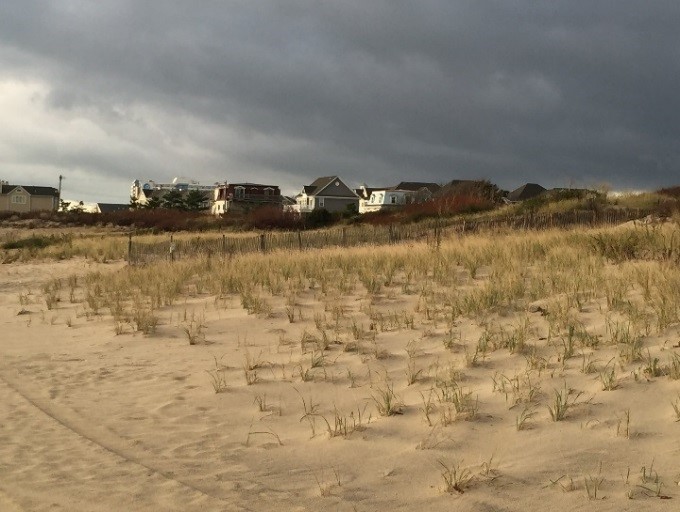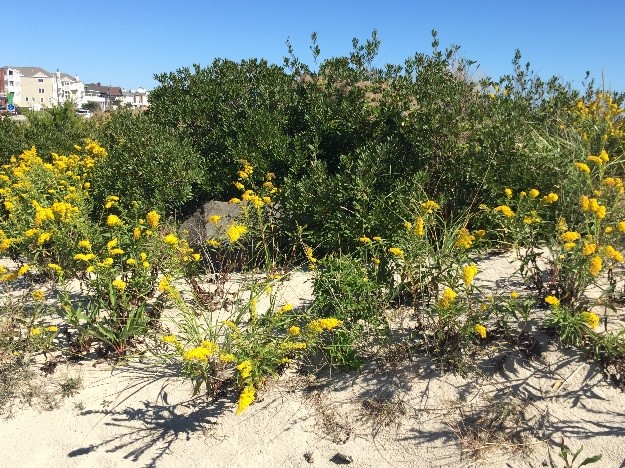|
FOR IMMEDIATE RELEASE |
Contact: Lawrence Hajna (609) 984-1795 |
|
DEP RECEIVES PRESTIGIOUS PLANNING AWARD FOR OUTREACH EFFORTS HELPING COMMUNITIES WITH INNOVATIVE RESILIENCE STRATEGIES (17/P102) TRENTON – The Department of Environmental Protection, working with numerous partners, has been recognized for outreach efforts that are helping coastal municipalities understand and implement innovative strategies to become more resilient to storms and flooding, Commissioner Bob Martin announced today.
The American Planning Association’s New Jersey Chapter honored the DEP with an Excellence Award for Community Engagement/Education for advancing public and community understanding of storm resiliency. “This prestigious award is an affirmation of the hard and innovative work the DEP has done since Superstorm Sandy devastated many parts of our state five years ago,” Commissioner Martin said. “Making New Jersey more resilient has been a core mission of the Christie Administration. DEP’s outreach effort is helping local officials become better informed about the proven and often creative solutions that they can implement in their own communities.” A key component of the DEP’s outreach effort is the development of Building Ecological Solutions to Coastal Community Hazards: A Guide for New Jersey Coastal Communities. This user-friendly guidebook, developed with the National Wildlife Federation and numerous other partners, outlines ecological approaches that can be implemented at the municipal level in every type of coastal community, ranging from encouraging planting of native dune grasses and creating living shorelines to assessing and restoring salt marshes. “The DEP developed the guide to show coastal municipalities the advantages of using green strategies to make their communities more resilient to storms and flooding, efforts that at the same time benefit wildlife and the natural environment,” said DEP Assistant Commissioner for Land Use Regulation Ginger Kopkash. Among the success stories highlighted in the guide:
The guide provides detailed examples of the benefits of assessing and nurturing the natural ecosystems that are integral to coastal areas – beaches, dunes, coastal forests, shrub lands and salt marshes. While New Jersey has lost much of its coastal forests to development during the height of coastal development decades ago, re-establishing them can hold dunes in place, protecting property and infrastructure while providing habitat for songbirds and other wildlife. Good examples of coastal forests can be found in Belmar, Stone Harbor, Avalon, Cape May City, and Cape May Point. Coastal forests and shrub lands behind barrier islands and along bays and creeks serve as windbreaks, provide erosion protection and reduce peak flood height, thereby protecting property and infrastructure such as roads, the manual notes. The guide suggests ways to maximize the benefits of these ecosystem types by connecting them through preservation and restoration with planting of native plant species. The guide offers municipalities the following ideas:
In addition to the National Fish and Wildlife Foundation and National Wildlife Federation, DEP technical partners in the effort include Sustainable Jersey, the Partnership for the Delaware Estuary, New Jersey Sea Grant Consortium/the Stevens Institute of Technology, the Barnegat Bay Partnership, New Jersey Audubon Society, and Rutgers University’s Edward J. Bloustein School of Planning and Public Policy. Local government partners include Atlantic City, Brigantine, Downe Township, Lower Township, Margate, Secaucus, Somers Point, Spring Lake, Upper Township, and Cape May County. For a downloadable copy of the resiliency guidebook, visit: https://urldefense.com/v3/__http://www.nwf.org/CoastalSolutionsGuideNJ__;!!J30X0ZrnC1oQtbA!ereTZ0VnsSe0tQyL6PgIRLx-L3CPpCQohkdBYWju8jZL0AWFg0s4SpIsjB51tUxG3DODwg$ More information on DEP’s coastal resiliency efforts is available at: http://www.nj.gov/dep/oclup/ NATIONAL WILDLIFE FEDERATION PHOTOS/Top: Long Branch; Bottom: Borough of Cape May ### |
|
 This effort, recognized by the New Jersey Chapter of the American Planning Association, includes community workshops, DEP outreach to municipal officials, technical assistance to local governments, and grants to help municipalities assess areas vulnerable to storms and flooding.
This effort, recognized by the New Jersey Chapter of the American Planning Association, includes community workshops, DEP outreach to municipal officials, technical assistance to local governments, and grants to help municipalities assess areas vulnerable to storms and flooding.  maritime forest and shrub vegetation where ecologically appropriate through ordinances, education and outreach.
maritime forest and shrub vegetation where ecologically appropriate through ordinances, education and outreach.